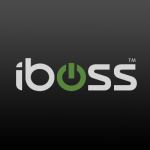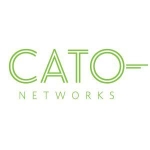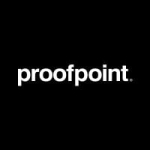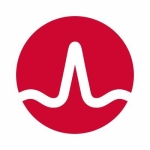What is our primary use case?
It's used for data governance and security. It's a cloud security tool providing very good discovery around whatever is happening in your organization, such as what users are doing on the internet and how data is flowing out of your organization. It is then used to put controls around what information can go out, who downloads what, and how much they can download. It helps put controls around these types of things to create secure collaboration between your organization and its partners, customers, and vendors.
It's a SaaS platform. It's not like hardware or software where you install new updates or new versions. It's controlled by Microsoft in the backend.
How has it helped my organization?
They have made built-in templates. If you integrate your AWS account with Microsoft MCAS, using the predefined templates it will scan all the functionalities that are available or accessible after the integration. It will then provide security posture recommendations around issues such as how many buckets you have publicly available, what data is not encrypted, what is publicly available and insecure, and which devices are not backed up. It helps you to understand your security posture and to enhance it.
And when it comes to secure collaboration, if you have information that you have already restricted and you don't want it to be shared outside of your organization, with the help of MCAS session policies you can put controls around it. It's integrated with storage solutions and you can put the controls around things using labels such "classified," "restricted," or "confidential."
Another scenario where MCAS is helpful is when people are leaving your organization soon. It can happen that they hide and start downloading certain documents and files. MCAS can help identify mass downloads or mass uploads and what the user is doing. That kind of detailed analysis is available to senior management or the security team so that they can take whatever steps are necessary.
What is most valuable?
There are a lot of features with benefits, including
- discovery
- investigation
- putting controls around things.
You can't say that you like the investigation part but not the discovery. Everything is correlated; that's how the tool works. Once the discovery of everything you feed into it is done, it gives you a nice dashboard. You can then plan what needs to be controlled and governed, and what should not be accessible in your environment.
It's quite well integrated with all Microsoft services, like Information Protection, Azure Portal, and Azure IoT, among other things. There are also integrations with AWS and Salesforce.
What needs improvement?
Although they are already doing it, I would like to see more integration with market leaders like Slack.
Another area that can be improved is to provide more reporting functionality. Currently, reporting is not very straightforward and it needs to be enhanced. Specific reports are not included and you need to run a query, drill down, and then export it and share it. I would love to have reports with more fine-tuning or granularity, and more predefined reports.
For how long have I used the solution?
We have been using Microsoft Cloud App Security for at least the last two and a half years. We are a Microsoft partner. We do everything for their products, from design to implementation.
What do I think about the stability of the solution?
It's stable. It's more stable than other Microsoft services. In my two and a half years of experience with MCAS, there have only been two times that it went down and was not accessible to us. The services, policies, and controls were there. It was just that we were not able to access them.
Whatever Microsoft has committed to in terms of stability, "99 point something," is pretty much true.
What do I think about the scalability of the solution?
It's a SaaS solution so the scalability depends purely on the organization: How many applications do they want to integrate with it and do they have the corporate licenses? MCAS itself is scalable. You don't need to deal with servers, or RAM, or finding a new data center. Scaling it is purely up to you and depends on how much data you want to feed it and on the use cases you want to use it for.
How are customer service and support?
I use Microsoft tech support at the highest levels. The experience with their tech support, as a partner, purely depends on what kind of contract you have and what kind of a relationship you have. If you have a very good relationship, you get responses when you need them. But when you talk about bugs or you are asking for a feature, you have to wait for their product life cycle. Overall, their support is good. Not average, but not excellent.
How would you rate customer service and support?
How was the initial setup?
The initial setup of Cloud App Security is quite straightforward. It's not complex. Microsoft's documentation around it is absolutely great. It guides you through the settings you need to configure and whatever apps you need to integrate. There is no difficulty in getting it up and running. It is more seamless than any other solution. It is even easier to run on Windows machines because the documentation is very good. They have very clearly described what needs to be done.
Once you have all the requirements, like your user account and license, a person can configure it in a day because it's a SaaS solution. But the time it will take depends on the fine-tuning, and that is determined by why you are using MCAS. That's the important part. If you're looking at user behavior, or if you're looking at data, or if you're looking at infrastructure security posture, each of these will affect the time it takes. If it's just for shadow IT, it will take one or two days to configure. If you're integrating it with AWS to help with your security posture, it will take three or four days.
One engineer who has prior experience is more than enough, but having two guys for setup might be better.
Day-to-day maintenance, again, depends on how you are going to utilize it. If you already have a SOC running with four or five people in it and your environment is small to medium in size, five people can use this tool and get value out of it. If you are talking about an organization like Walmart or Microsoft or a multinational company that has users across regions, you will need more people to support it. MCAS is a tool. It will have the data, but you will need to use it.
What was our ROI?
I'm not involved with the cost side of the solution so I don't know how much has been invested in MCAS. But where it's adding value is around the controls. I'm sure there are savings in that regard.
Which other solutions did I evaluate?
I have not implemented any other solutions, but I looked into Zscaler cloud security. Because Zscaler is an independent company, it doesn't have that many solutions with Microsoft. A cloud app security solution should have native products as well as integration with many other products. On that point, Microsoft is way ahead. For example, 80 percent of the world is using Office 365 for email services and 60 percent are using SharePoint for information sharing. Because these tools are Windows products, the controls become easy to implement.
What other advice do I have?
My advice is to use it to its fullest capabilities. It has a lot of features and it is being enhanced daily. It's a full engine that you can use to discover all your assets in the cloud, whether they are on a public cloud or a private cloud. Every month or every quarter, look at what's new and how you can leverage it. You're already paying for those enhancements so use them, fine-tune them, and optimize them. The tool has a lot of capabilities. A lot of people only utilize it for information protection or tracking user activity or for their cloud-based security posture. Use it all. There's a lot in it.
MCAS is not a tool that interacts with end-users because there is no client. They don't know that MCAS is in the picture, so it doesn't impact the end-user.
The biggest lesson I would take from the use of Microsoft Cloud App Security is that you are being monitored. Do not use your professional device for personal use because there are more eyes and controls around.
In addition, the way you use MCAS is that you discover and then you put the controls in place to govern things. That's how any other security tool works. You first put it in learning mode to see what will happen. For example, If I put in this or that control, how much will it impact my end-users? In those terms, MCAS has been really nice.
If you have a lot in the Microsoft environment or AWS or Google Cloud, it's going to help you a lot.
Disclosure: My company has a business relationship with this vendor other than being a customer: Partner
















